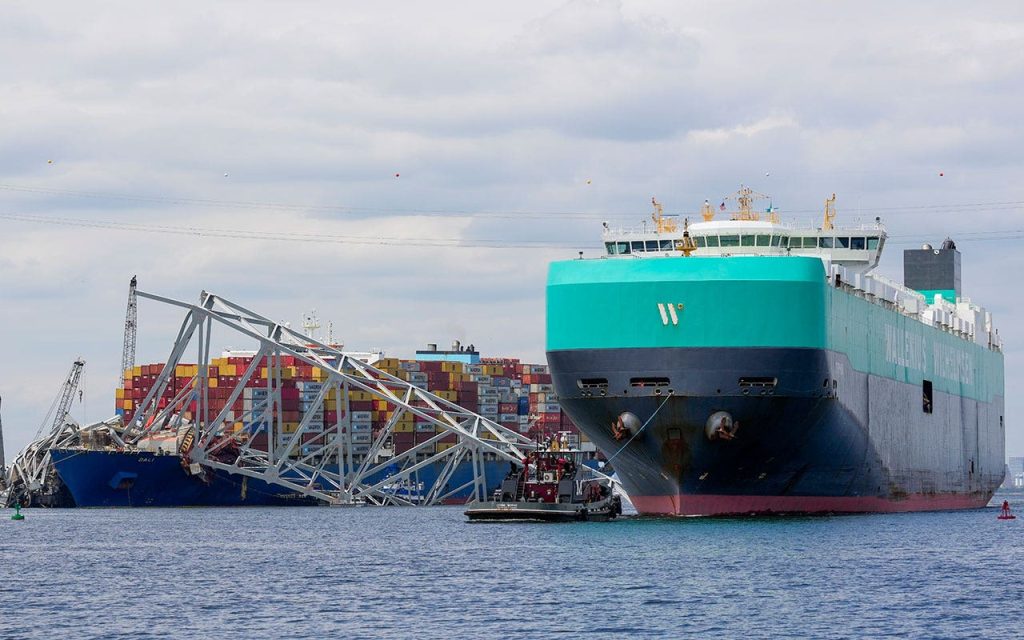The reopening of a newly constructed deep-water channel in Baltimore marked the end of a four-week halt in maritime traffic caused by the collapse of the Francis Scott Key Bridge. The first cargo ship, the Balsa 94, passed through the newly opened channel heading to Saint John, Canada. This marked an important step in the ongoing cleanup and recovery efforts as crews have been working to clear thousands of tons of debris. The collapse of the bridge had impacted the jobs of thousands of longshoremen, truckers, and small business owners, prompting local and state officials to prioritize reopening the port and restoring traffic to normal capacity.
The reopening of the new channel allowed for several stranded vessels to finally leave Baltimore, with other ships scheduled to enter the port in the coming days. Thousands of longshoremen, truckers, and small business owners have been impacted by the collapse, leading officials to establish assistance programs for those affected. The cleanup effort continues as pieces of the steel span still block parts of the port’s main channel, although the channel depth of 35 feet is an improvement over the previous temporary channels. The cleanup effort is slightly ahead of schedule, with officials hoping to reopen the port’s main channel next month.
The Dali, the massive container ship that caused the bridge collapse, is expected to be removed from the collapse site in the coming weeks. The ship lost power and veered off course shortly after leaving the Port of Baltimore. Six members of a roadwork crew plunged to their deaths in the collapse, with four bodies recovered and two still missing. A memorial near the bridge has been set up in honor of the victims, with large wooden crosses decorated with flags from their home countries and personal items. The new channel will be open until Monday or Tuesday before closing again to work on removing steel spans from the Dali and refloat the ship.
Baltimore’s mayor and city council have called for the owner and manager of the Dali to be held fully liable for the bridge collapse, which could have devastating economic impacts on the region. The port, established before the nation’s founding, has long been an economic driver for Baltimore and the surrounding area. Court filings have been made in response to a petition from the companies asking for their liability to be capped under a maritime law provision. The FBI and the National Transportation Safety Board are conducting probes to determine the cause of the ship losing power and striking the bridge. The closure of the port has disrupted a major east coast trucking route, further emphasizing the importance of reopening the port as soon as possible.
Despite the reopening of the new channel and the passage of commercial ships, crews continue the arduous process of clearing debris from the collapse site. A hulking vehicle carrier named Carmen also moved through the channel, dwarfing the wreckage removal equipment stationed nearby. The cleanup effort is ongoing, with crews smashing fallen roadway into manageable pieces to be lifted from underwater. The reopening of the port’s main channel next month will allow for a normal flow of traffic, hopefully easing the economic ripple effects of the collapse. The opening of the new channel is an important milestone in the ongoing recovery and cleanup efforts following the collapse of the Francis Scott Key Bridge in Baltimore.













